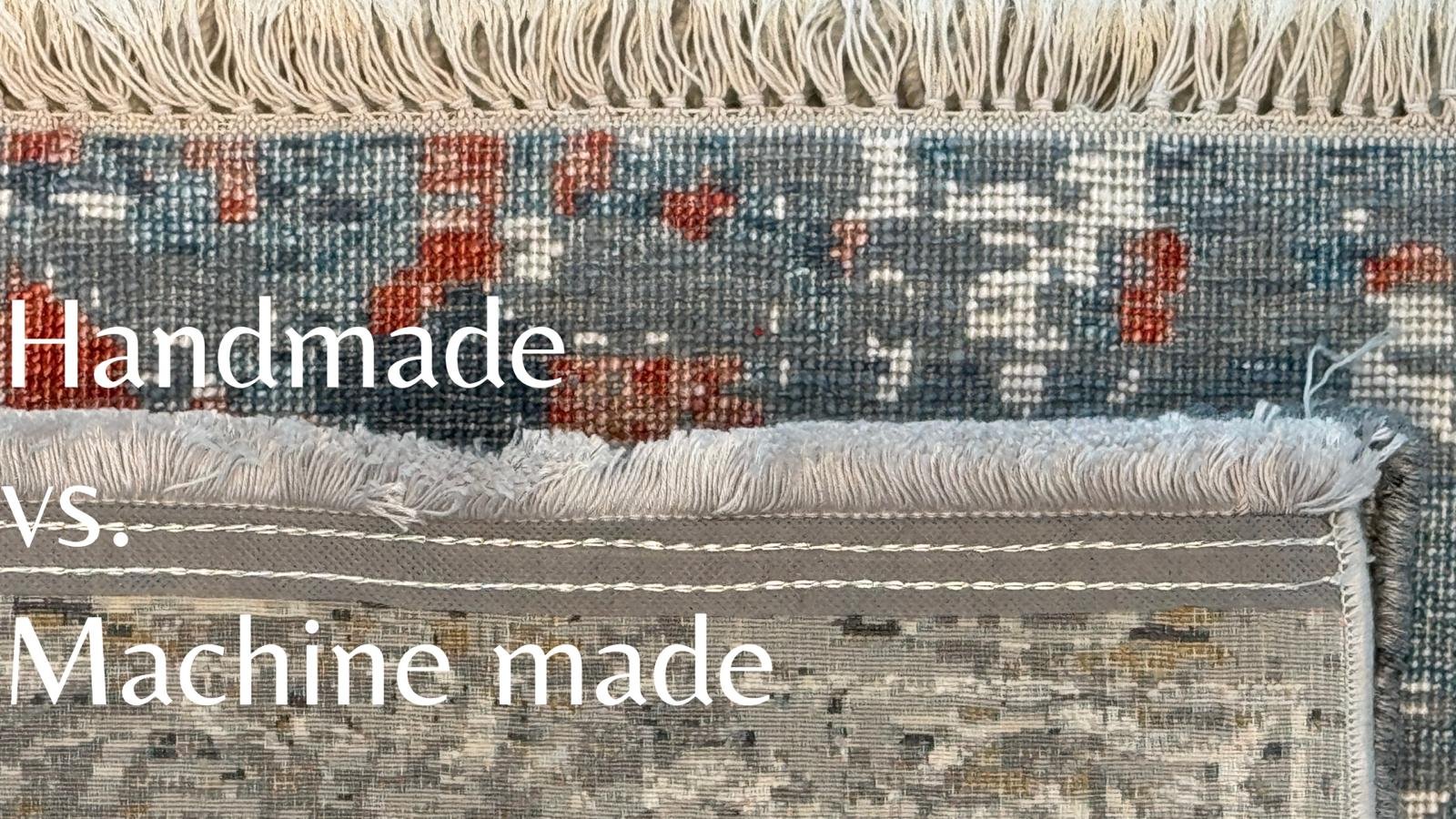
03 May How to Tell if a Rug Is Handmade or Machine-Made
How to Tell if a Rug Is Handmade or Machine-Made: Dealer’s Guide
Introduction
If you’ve ever wondered how to tell if a rug is handmade or machine-made, you’re not alone. Many homeowners and collectors in Florida — especially in style-conscious areas like Palm Beach, Boca Raton, and Miami — want to invest in authentic rugs but aren’t sure what to look for. As an experienced rug dealer, I’ve spent years helping clients identify the subtle (and not-so-subtle) differences between handwoven treasures and mass-produced pieces. In this guide, I’ll share the key signs, insider tips, and buying advice so you can choose rugs with confidence and value.
Why It Matters to Know the Difference
-
Investment vs. Decor: Handmade rugs are often investment pieces that appreciate in value, while machine-made rugs are typically for short-term decor.
-
Durability: Hand-knotted rugs can last decades (or centuries) with care. Machine-made rugs usually have a shorter lifespan.
-
Craftsmanship & Story: Handmade rugs carry a cultural heritage; machine rugs are mass-produced.
-
Avoiding Scams: In markets like South Florida, high-end rug showrooms and estate sales sometimes have machine-made rugs mislabeled as handmade.
How to Tell if a Rug Is Handmade or Machine-Made
1. Flip It Over – Check the Back
Handmade rugs show individually tied knots, which means the back will reveal slight variations in knot size and alignment. Machine-made rugs have a uniform, grid-like backing.
Local tip: In Palm Beach rug galleries, ask to see the back before you buy.
2. Look at the Fringe
In handmade rugs, fringe is part of the foundation of the rug. In machine-made rugs, the fringe is sewn or glued on after weaving.
3. Examine the Pattern
-
Handmade rugs often have slight asymmetries or design variations — a sign of human artistry.
-
Machine-made rugs have perfectly repeated patterns.
4. Feel the Texture
-
Handmade rugs made with wool or silk feel softer and richer.
-
Machine-made rugs can feel synthetic or stiff.
5. Look at the Colors
-
Handmade rugs use natural vegetable dyes, which age beautifully and show subtle variations.
-
Machine-made rugs use synthetic dyes that can fade unevenly.
Common Myths About Handmade Rugs
-
Myth: Perfect symmetry means high quality.
Truth: Small imperfections often indicate authenticity. -
Myth: All handmade rugs are expensive.
Truth: Smaller or newer handmade rugs can be affordable. -
Myth: Machine-made rugs are always low quality.
Truth: Some modern machine rugs can be durable, but they rarely hold investment value.
Buying Tips for Florida Rug Shoppers
-
Buy from Reputable Dealers: Look for galleries in Palm Beach, Fort Lauderdale, or Miami that specialize in antique and handwoven rugs.
-
Ask for Documentation: Certificates of authenticity help verify the origin and craftsmanship.
-
Consider Your Climate: In Florida’s humidity, handmade wool rugs breathe better and resist wear compared to synthetic options.
-
See It in Person: Natural light reveals color nuances better than showroom lighting.
FAQs
Q: Can machine-made rugs ever be valuable?
A: Rarely. While some vintage machine rugs have charm, they generally don’t appreciate like handmade rugs.
Q: Is knot count the only sign of quality?
A: No. Material, dye quality, design execution, and condition are equally important.
Q: How long will a handmade rug last?
A: With proper care, a handmade rug can last 50–100 years or more.
Final Thoughts
Knowing how to tell if a rug is handmade or machine-made protects your investment and deepens your appreciation for the artistry of weaving. Whether you’re shopping in Palm Beach, browsing Miami’s luxury design district, or sourcing rugs for a coastal Florida home, understanding these signs will help you choose pieces that are not only beautiful, but built to last.
📍 Visit our Palm Beach gallery to see and feel the difference between handmade and machine-made rugs — and find the perfect piece for your home.

No Comments